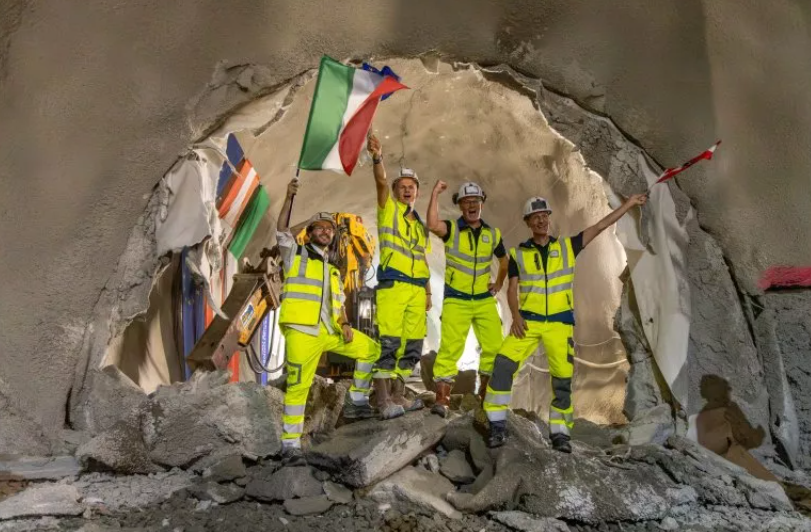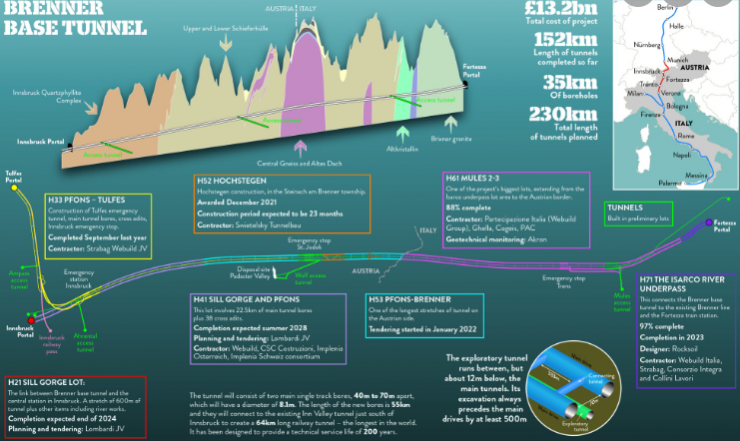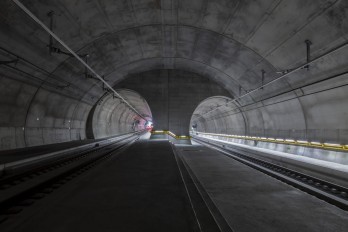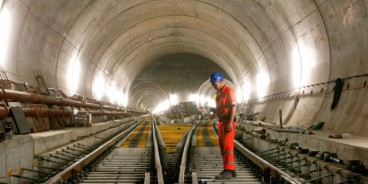Beneath the Alps: Brenner Base Tunnel Breakthrough Connects Italy and Austria


Sources: newcivilengineer.com, euractiv.com, webuildgroup.com
Want to read more like this story?

Tunnel Boring Meets Fault Zones: Insights from the Brenner Base Tunnel
Jan, 29, 2025 | NewsThe Brenner Base Tunnel (BBT), an ambitious railway infrastructure connecting Austria and Italy, i...
World’s longest railway tunnel will remain closed for months after derailment
Aug, 21, 2023 | NewsEurope’s Gotthard Base Tunnel, the world’s longest and deepest railway tunnel, is going to remain c...

New tunnel in Swiss Alps changes railway transport in Europe
Sep, 14, 2020 | NewsA significant step has been made for the completion of a great railway project in Europe. The Cen...

The Longest Underwater Tunnel
Jul, 13, 2015 | NewsThe underwater tunnel is a huge project with a cost at around 36 billion US dollars, with a length t...
Banihal-Katra rail link: India's longest escape tunnel completed
Dec, 21, 2022 | NewsIndia’s longest escape tunnel, which is 12.89 km long constructed on the 111km under-construction B...

World's Longest Tunnel Running Under Swiss Alps Opens
Jun, 09, 2016 | NewsOn June 1st, the Gotthard Base Tunnel was officially opened, making it the longest and deepest tunne...
The longest railway tunnel in Nordics handed over
Nov, 23, 2022 | NewsThe 20km long Blix tunnel is the longest railway tunnel in Scandinavia and the first Norwegian rail...

Railway Innovation: Łódź Tunnel to Revolutionize Polish Transportation
Dec, 26, 2024 | NewsThe ambitious Łódź rail tunnel project is set to redefine Poland's transportation landscape, connec...

Oman-UAE cross-border rail project enters underground work
Oct, 09, 2025 | NewsTunnel excavation has officially started in the Al Hajar Mountains as part of the UAE–Oman Hafeet R...
Trending

Vertical gardens in Mexico City to combat pollution

Characteristics of Load Bearing Masonry Construction

Taipei 101’s impressive tuned mass damper

Morocco Implements Landmark Dam Perforation to Combat Water Stress in Marrakech

Dutch greenhouses have revolutionized modern farming

The Line at Neom faces feasibility reassessment while construction continues

A new chapter for Sunderland: The £31 million Keel Crossing opens

